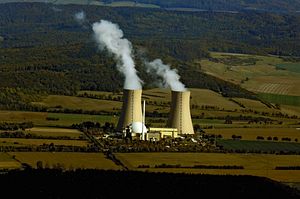A report by the Japanese Institute of Energy Economics has highlighted the economic impact of keeping the country’s nuclear reactors offline. Bringing fewer than half of Japan’s 48 reactors would make a significant difference, specifically in the balance of trade. Meanwhile, health precautions are being taken in the areas surrounding what is likely to be the country’s first nuclear power plant to come back online, after it passed a safety inspection by the government’s Nuclear Regulation Authority. And even as Japan considers how many of its reactors can be safely restarted, the U.S. is attempting to apply the lessons of the 2011 nuclear disaster.
The IEE found that bringing back just 19 of Japan’s nuclear reactors by fiscal 2015 (the number of reactors the NRA is currently inspecting) would have a large effect on Japan’s trade deficit. Its report found that the trade deficit of 13.8 trillion yen ($135 billion) in fiscal 2013 could be reduced to 7.2 trillion yen in fiscal 2015 if these 19 reactors are restarted. The number of nuclear reactors online will also affect consumer energy prices. Restarting 19 reactors would likely price energy at 11.2 yen per kilowatt hour, while no reactors would drive energy prices to 13 yen per kilowatt hour, 60 percent higher than the price of 8.2 yen in 2010.
As the final approval by local communities is negotiated near Kyushu Electric Co.’s Sendai nuclear power plant, the NRA is following through on additional safety measures implemented in 2012. The authority distributed iodine tablets to 4,700 residents within five kilometers of the plant, in accordance with guidelines that those living within a 30 km radius of a disaster on the scale of the Fukushima Daiichi nuclear meltdown “should be given iodine as quickly as possible” in order to protect against radiation affecting the thyroid gland. However, there has been little mention of how discussions with local communities and the plant’s operator have been progressing.
The U.S. National Academy of Sciences is meanwhile attempting to draw lessons from Japan’s nuclear disaster in 2011 for the American nuclear industry. Its report focuses on highly unlikely natural disasters and how to properly deal with them. Interestingly for Japan, the report found (much like a similar Japanese independent investigation) that the disaster at Fukushima Daiichi should not have been unexpected. Onagawa nuclear power plant in Miyagi prefecture was actually closer to the earthquake’s epicenter, but Onagawa incorporated better safety features that allowed for a safe shutdown; including building on higher ground to avoid the worst of a tsunami larger than the one Fukushima Daiichi experienced, and having better emergency electricity available.
As Japan’s local communities begin considering nuclear restarts in their areas, many factors will be taken into account. Safety is likely to be their chief concern, as energy companies and the government will seek to show every precaution is now being taken. Making a culture of safety and preparation like that displayed at Onagawa’s plant an integral part of each reactor’s restart will be crucial, as Japan’s ballooning energy imports begin to have a significant impact on the country’s economic growth prospects.

































